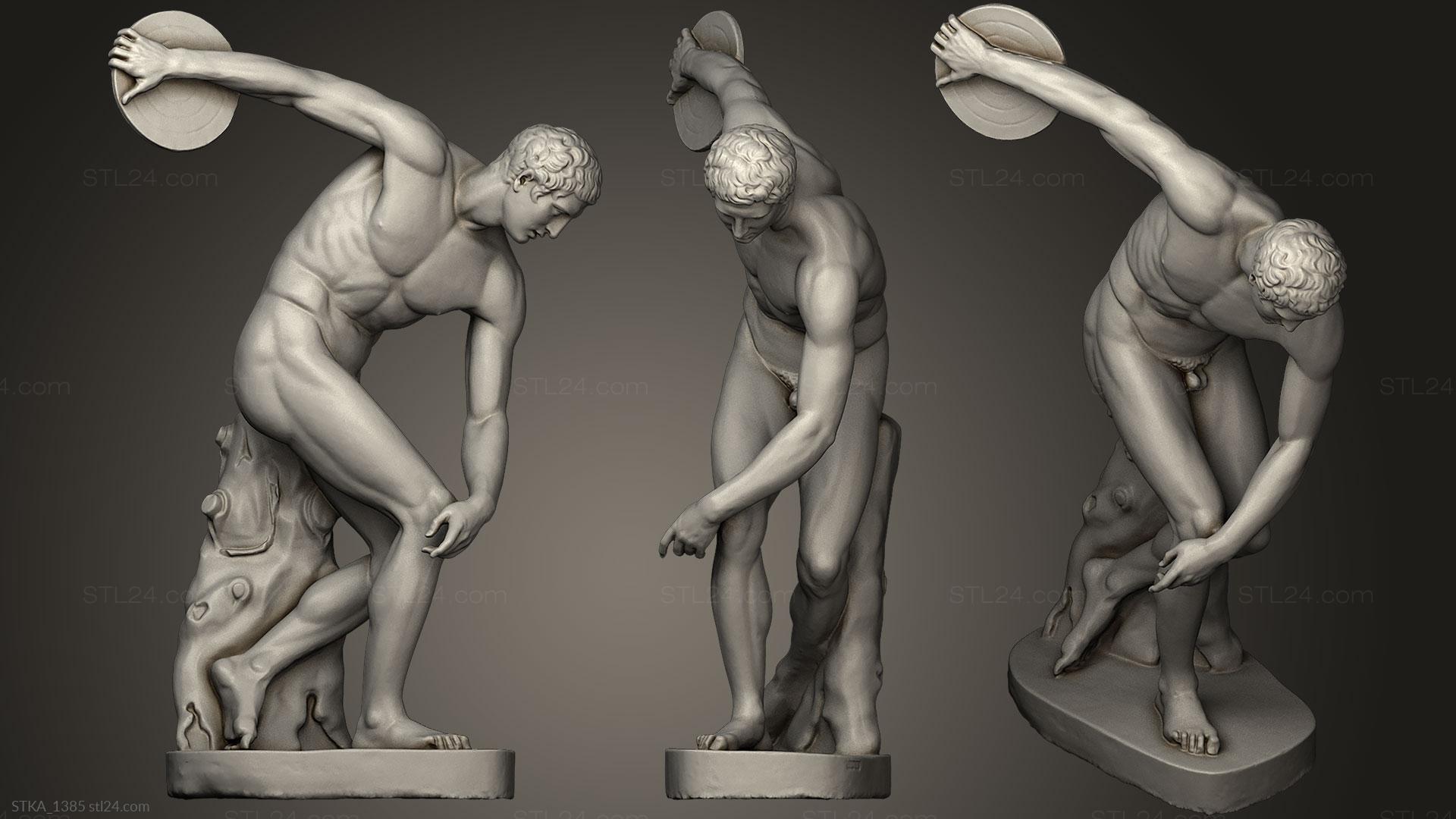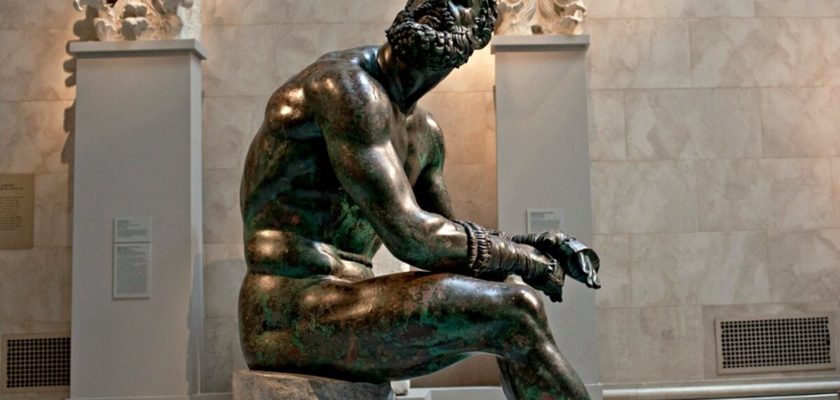Greek statues are most famous for their exceptional craftsmanship, realistic representations, and significant impact on the world of art. These captivating statues have withstood the test of time, captivating audiences with their beauty and cultural significance. In this article, we delve into the realm of ancient Greek art to explore the 5 most famous Greek statues, examining their historical context, artistic styles, and enduring legacy.
The Boxer of Quirinal
The Boxer of Quirinal, also known as the Terme Boxer, is an extraordinary Hellenistic bronze statue that offers a glimpse into the world of ancient Greek sports and the physical and emotional toll it took on athletes. This captivating sculpture, dating back to the 1st century BCE, portrays a weary and battered boxer, revealing the grit, determination, and vulnerability of these revered competitors.
The statue showcases the boxer’s battered physique, with his muscular form visibly marked by wounds and bruises. His expression conveys a sense of exhaustion, pain, and stoic resolve. The sculptor’s attention to detail, capturing the boxer’s facial features, the texture of his skin, and the precision of his boxing gloves, adds a remarkable level of realism and emotional depth to the piece.
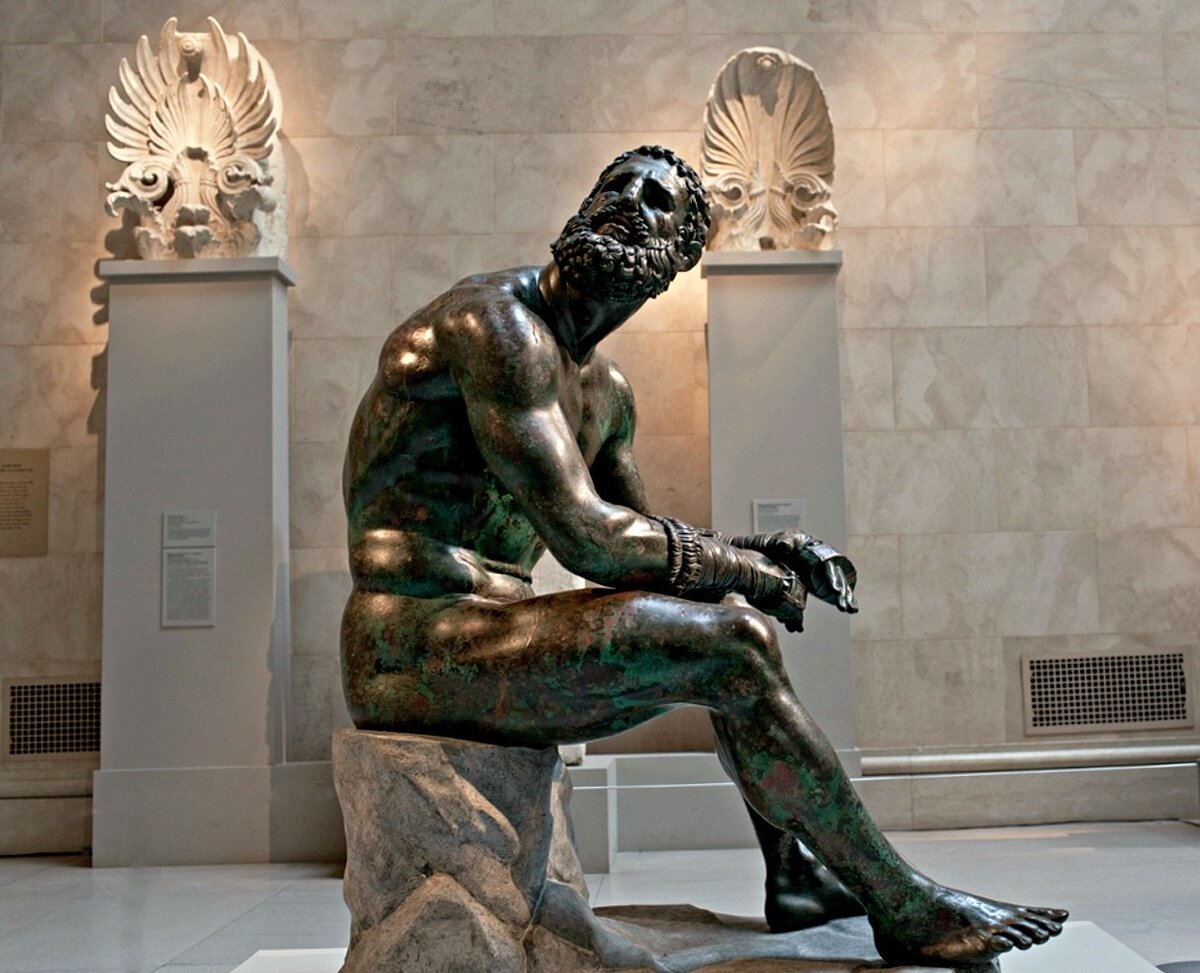
Laocoön and His Sons
The Laocoön and His Sons sculpture is an awe-inspiring masterpiece and one of the most famous Greek statues. the statue embodies the emotional intensity and dramatic storytelling of ancient Greek art. Created during the Hellenistic period, this marble sculpture depicts the tragic scene from Greek mythology where Laocoön, a Trojan priest, and his two sons are entwined and tormented by sea serpents.
The sculpture captivates viewers with its incredible attention to detail and the vivid portrayal of pain, anguish, and despair. The contorted bodies of Laocoön and his sons, writhing in the grip of the serpents, convey a sense of agony and desperation. The artist’s mastery in capturing the human form in such an emotionally charged state is truly remarkable.
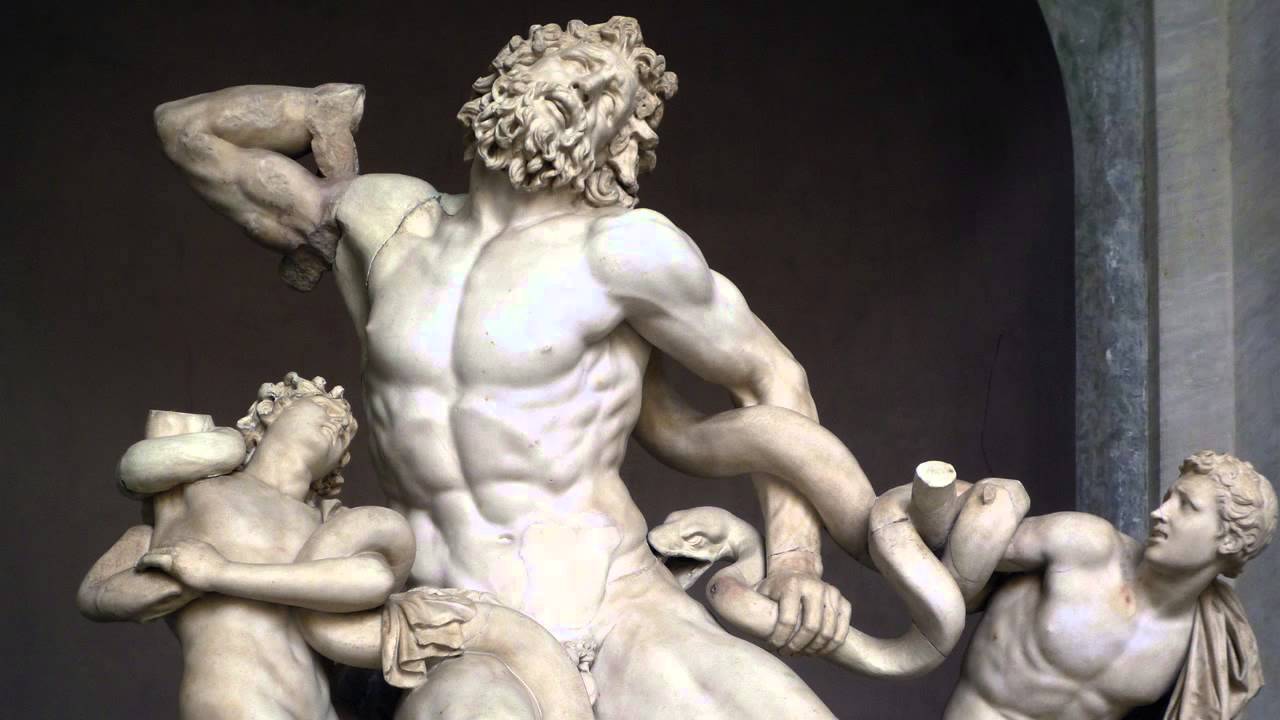
Venus de Milo (Aphrodite of Milos)
The Venus de Milo statue, also known as Aphrodite of Milos, is an iconic masterpiece that has captivated art enthusiasts and historians for centuries. Created around 100 BCE, this marble sculpture depicts the Greek goddess of love and beauty, Aphrodite. The goddess is shown in the statue in an elegant, slightly bent position, without her arms. It is approximately six feet, eight inches tall and this ancient masterpiece is one of the most famous Greek statues.
The Venus de Milo represents the Hellenistic artistic style, characterized by intricate details and a sense of movement. The sculpture’s flowing drapery and delicate facial features capture the essence of Aphrodite’s divine beauty. Despite the missing arms, the statue’s enigmatic charm has only grown, leaving room for speculation about the original attributes she held, such as a mirror or an apple.
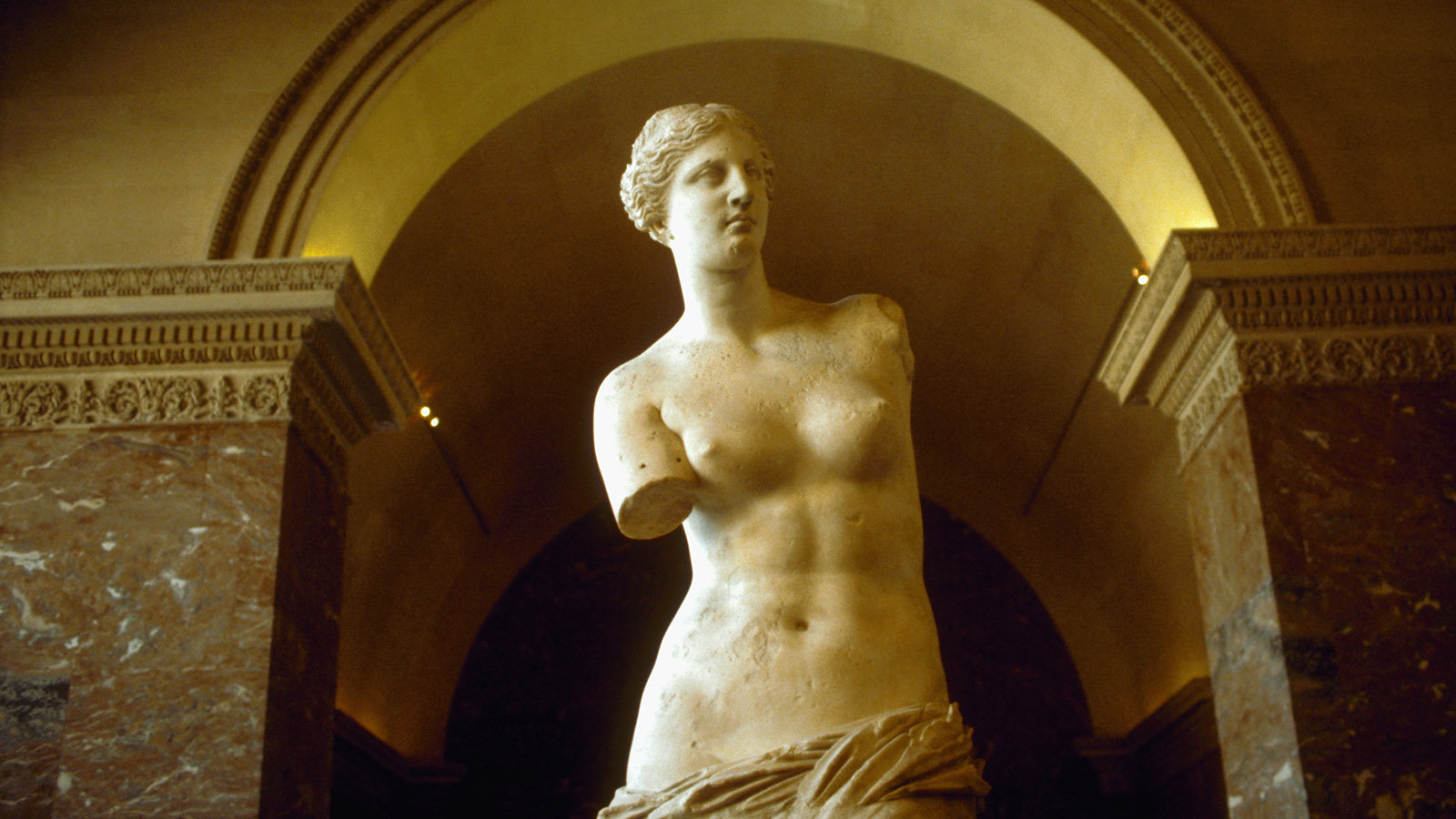
Aphrodite of Knidos
The Aphrodite of Knidos, sculpted by Praxiteles during the 4th century BCE, marked a pivotal moment in the portrayal of female nudity in ancient Greek art. This captivating marble sculpture showcases the goddess Aphrodite, the embodiment of love and beauty, in a modest yet sensuous pose.
The Aphrodite of Knidos was the first life-sized representation of a nude female form in Greek sculpture. Praxiteles boldly depicted Aphrodite as she prepares to bathe, covering her modesty with her hands while revealing her alluring beauty. The statue challenges traditional artistic conventions of the time, showcasing a level of naturalism and sensual elegance that was groundbreaking in ancient Greek art.
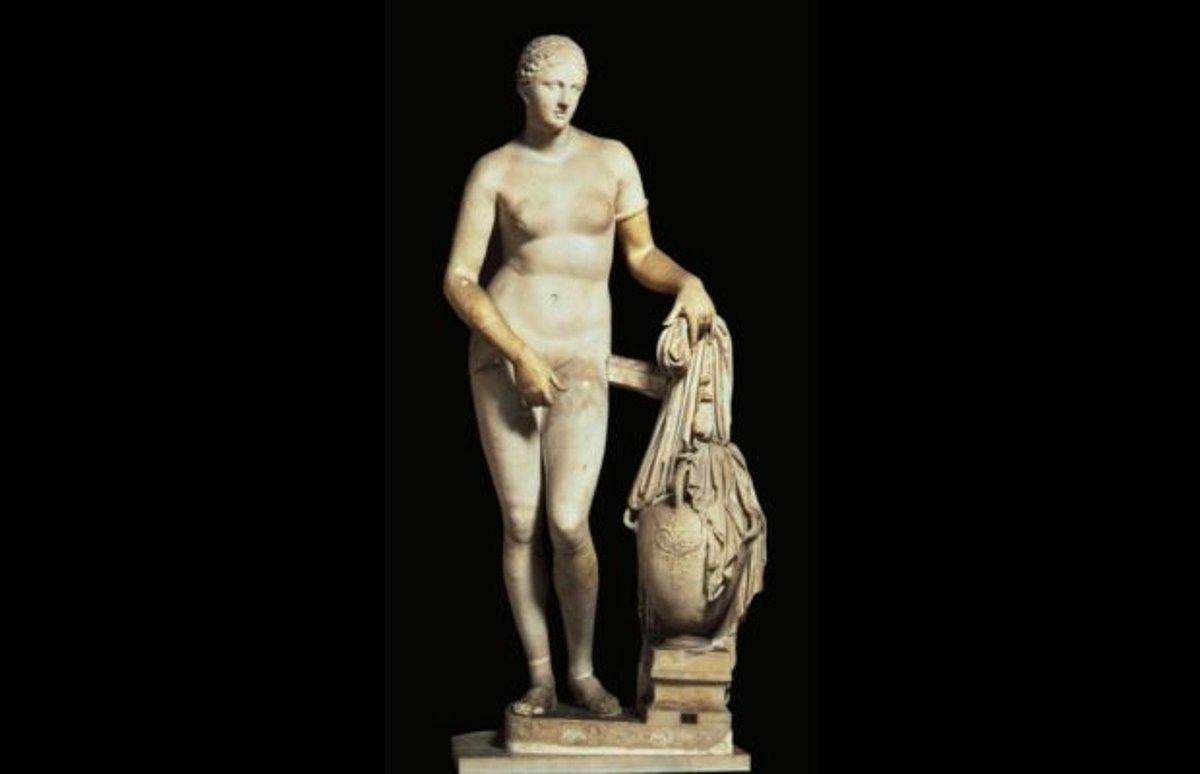
Discobolus (Discus Thrower)
The Discobolus, also known as the Discus Thrower, it is a ancient and one of the most famous Greek statues that embodies the athletic prowess and grace of the human form. Created by the famous artist Myron during the 5th century BCE, this masterpiece captures a pivotal moment in an athlete’s motion as they prepare to release the discus.
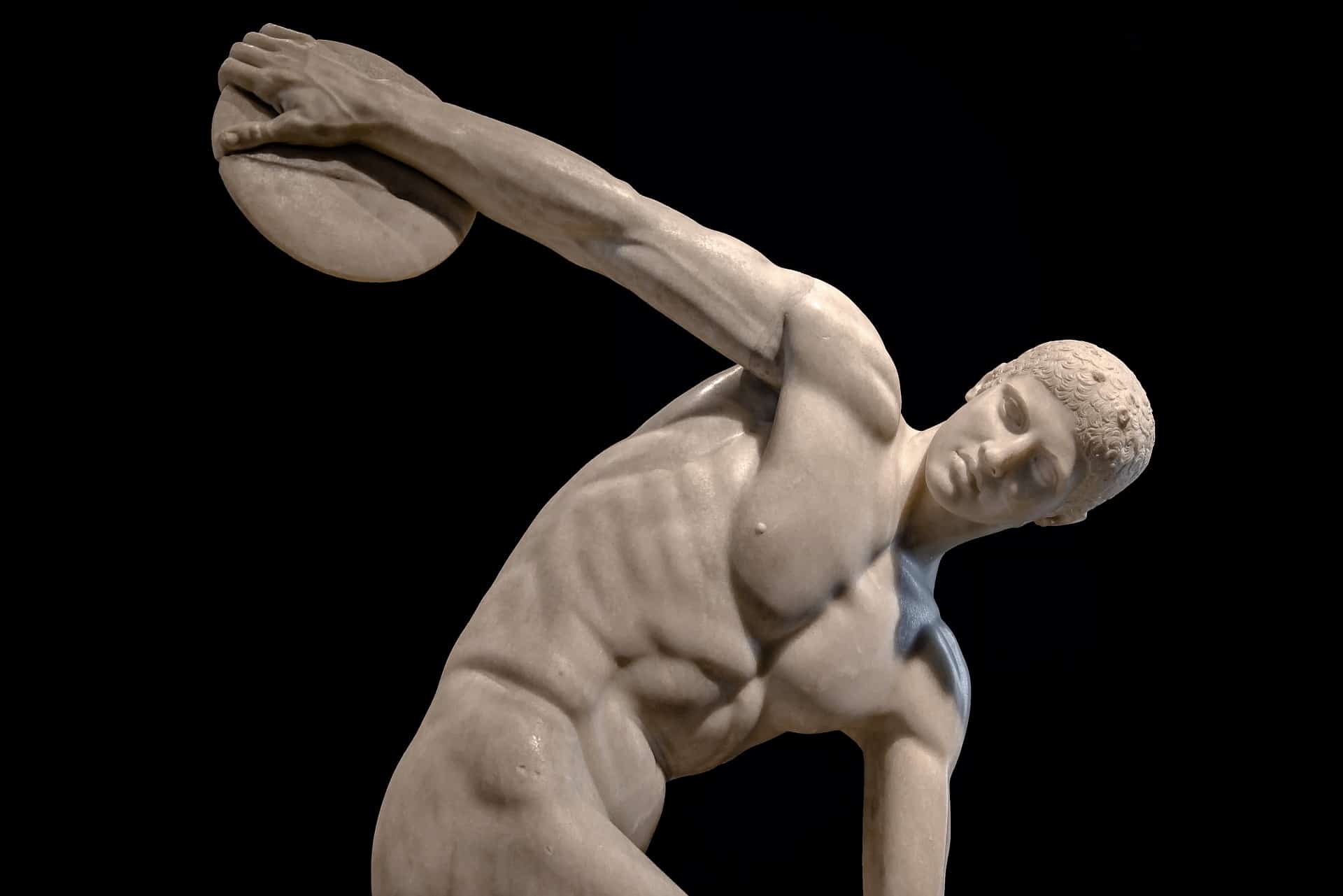
The Discobolus showcases the idealized athletic physique, with meticulously sculpted muscles and sinews that convey a sense of power and movement. The poised stance of the athlete, with one leg stretched backward and the other supporting the body’s weight, exudes a sense of controlled energy and concentration. This dynamic composition captivates viewers, as they witness the frozen moment of focused intensity.
